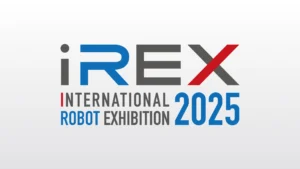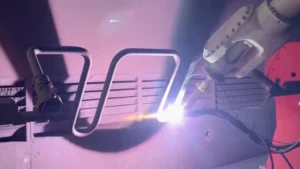table of contents
- Heading 1
- Heading 1
- Heading 1
share this
Automotive factories have long been using robots. As car companies progress towards automation, they are increasingly relying on robots, especially collaborative robots (cobots), to improve their productivity.
For example, the BMW’s Spartanburg site used cobots to take over installing the inside of car doors with moisture prevention and sound insulation. Nissan also used robots to loosen bolts and carry heavy objects to improve productivity and burden on workers. [1]
In part 2, we discussed the pros and cons of hyper-automation in Tesla. This time, taking a different look, we will delve deep into how Toyota incorporated robots in their factories.
Case Study 3:
Toyota, Birthplace of Lean Ideals
Being the birthplace of lean production, Toyota has been the hallmark of innovation and efficiency in the 1990s. Today, Toyota is moving towards a new era with automation.
What Worked: Process First, Then Robots
In contrast to Tesla, Toyota decided to refine the process first then bring in the robots.
The Japanese manufacturer acknowledges that machines can execute repetitive tasks at a low cost. However, they value the craftsmanship and adaptability of humans more. Robots are unable to increase their own efficiency or bring insight into the process design. But people can.

Toyota utilised robotic aids to assist their workers in their daily job instead. One of such robots include an automated spring loaded seat that allows for more comfort while working beneath a vehicle moving on the assembly line. Exoskeletons are also used to relieve the load when lifting an object or working overhead. Compared to others, Toyota has chosen to use wearable devices to improve the productivity of its workforce by reducing the strain on the workers. Humans are at the core of Toyota, robots are there merely to assist them.

What Didn’t: Only Able to Automate 8% of Processes
The reluctance to automate however, has come at the expense of expansion. At Toyota, automation is only present in 8% of its processes, and this ratio has been at this level for the last 10 years.
“Our automation ratio today is no higher than it was 15 years ago,” Wil James, president of Toyota Motor Manufacturing in Kentucky said.
With constant innovation, the robots should be contributing to better productivity, with or without humans. Staying stagnant may allow for better productivity now but underestimating the speed of technological advancement is hardly a good approach.
Key Takeaway
Keeping true to their fundamental lean principles of streamlining the process first is what helped them to stay grounded and avoid mistakes. Toyota focuses on using robots to help individuals, harnessing the intelligence of the humans and the physical flexibility and strength of robots.
However, with technology, these manufacturing principles may not be able to keep up with disruptive technology, potentially leaving Toyota behind. Using Lean ideals in robotics further explored in this blog post might be a better approach.
Final Thoughts
From Mercedes-Benz, we learned to optimise the collaboration between humans and robots and to avoid using robots to install custom features.
As for Tesla, we learned that to scale fast and develop quickly, we can use agile principles. At the same time, there should be a good balance between full dependency on robots and relying on humans expertise.
Lastly, Toyota taught us that while robots are important, optimising the process is equally essential. Without the intense use of robots, perhaps disruptive technology will have ripple effects on Toyota cars in the future.

At the moment, reprogramming robots take too long, compared to humans for customised products. Instead of ignoring the idea of automation, it is important to fix existing software issues. With emergence of more adaptable robots that include machine learning and artificial intelligence, it is not before long that these programming issues with robots become non-existent.
In the future, the combination of better materials, better algorithms, and better hardware will make robots more intelligent and suited for more uses. To be dismissive of the technology or automation as a whole is detrimental, as these disruptive technologies will progress faster than anyone can imagine.
Moving forward, lessons from these companies can be considered when one is building a new factory for oneself, regardless of the industry.
Follow Augmentus on Linkedin, Facebook to be updated for future insightful posts like these.
About Augmentus
Augmentus offers a no-code and fully-integrated robotic programming software that enables anyone, even those with no robotic experience, to program dynamic industrial robots in minutes. Our proprietary technology incorporates an intuitive graphical interface on an iPad that eliminates the need for coding and CAD files in robot teaching. Companies using Augmentus have experienced up to 70% cost reduction and 17 times faster deployments across a wide variety of applications, such as spraying, palletizing, welding, and inspections. Augmentus ushers in a new era of human-machine interface, democratizing robotic automati
Book a demo now to experience it.
References
- [1] Cobot programming for collaborative industrial tasks: An overview https://www.researchgate.net/publication/331855439_Cobot_programming_for_collaborative_industrial_tasks_An_overview
- [2] At Toyota, The Automation Is Human-Powered https://www.fastcompany.com/40461624/how-toyota-is-putting-humans-first-in-an-era-of-increasing-automation




